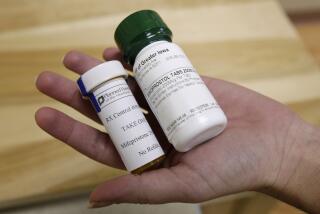How Mifepristone Works
- Share via
Mifepristone blocks the effects of progesterone, a hormone necessary to sustain pregnancy. Without progesterone, the fertilized egg detaches from the uterine wall, the cervix softens and opens and the uterine lining begins to break down.
Two days after taking it, women are given the drug misoprostol, an anti-ulcer drug that is also known by the brand name Cytotec. In small doses, misoprostol causes contractions in the uterus, helping to expel the embryo. Women typically remain in a doctor’s office or clinic office up to four hours after taking misoprostol. Most are then released to go home.
Most patients are advised to see the doctor again 10 to 15 days later, when a pelvic exam and sonogram are conducted to make sure the abortion is complete. In most patients, the abortion is completed within 24 hours, although some women wait as long as two or more weeks to abort. If after several weeks the abortion is not complete, a surgical abortion should be performed.
Women experience significant cramping for several hours after taking the pills and may pass blood clots. Mifepristone can cause nausea, headache and weakness for several hours. Misoprostol can cause nausea, vomiting and diarrhea for several hours. Doctors usually provide medications to ease these side effects.






